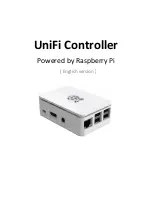For coherent 8-bit writes to the transmit data buffer, write to LPUART_CTRL[T8] and
LPUART_CTRL[T9] before writing to LPUART_DATA[7:0]. For 16-bit and 32-bit
writes to the LPUART_DATA register all 10 transmit bits are written to the transmit data
buffer at the same time.
If the bit values to be transmitted as the ninth and tenth bit of a new character are the
same as for the previous character, it is not necessary to write to LPUART_CTRL[T8]
and LPUART_CTRL[T9] again. When data is transferred from the transmit data buffer to
the transmit shifter, the value in LPUART_CTRL[T8] and LPUART_CTRL[T9] is
copied at the same time data is transferred from LPUART_DATA[7:0] to the shifter.
The 9-bit data mode is typically used with parity to allow eight bits of data plus the parity
in the ninth bit, or it is used with address-mark wakeup so the ninth data bit can serve as
the wakeup bit. The 10-bit data mode is typically used with parity and address-mark
wakeup so the ninth data bit can serve as the wakeup bit and the tenth bit as the parity bit.
In custom protocols, the ninth and/or tenth bits can also serve as software-controlled
markers.
46.4.4.2 Idle length
An idle character is a character where the start bit, all data bits and stop bits are in the
mark postion. The CTRL[ILT] register can be configured to start detecting an idle
character from the previous start bit (any data bits and stop bits count towards the idle
character detection) or from the previous stop bit.
The number of idle characters that must be received before an idle line condition is
detected can also be configured using the CTRL[IDLECFG] field. This field configures
the number of idle characters that must be received before the STAT[IDLE] flag is set,
the STAT[RAF] flag is cleared and the DATA[IDLINE] flag is set with the next received
character.
Idle-line wakeup and idle match operation are also affected by the CTRL[IDLECFG]
field. When address match or match on/off operation is enabled, setting the
STAT[RWUID] bit will cause any discarded characters to be treated as if they were idle
characters.
46.4.4.3 Loop mode
When LPUART_CTRL[LOOPS] is set, the LPUART_CTRL[RSRC] bit in the same
register chooses between loop mode (LPUART_CTRL[RSRC] = 0) or single-wire mode
(LPUART_CTRL[RSRC] = 1). Loop mode is sometimes used to check software,
Chapter 46 Low Power Universal Asynchronous Receiver/Transmitter (LPUART)
Kinetis KE1xZ256 Sub-Family Reference Manual, Rev. 3, 07/2018
NXP Semiconductors
1217
Summary of Contents for Kinetis KE1xZ256
Page 2: ...Kinetis KE1xZ256 Sub Family Reference Manual Rev 3 07 2018 2 NXP Semiconductors...
Page 178: ...Usage Guide Kinetis KE1xZ256 Sub Family Reference Manual Rev 3 07 2018 178 NXP Semiconductors...
Page 356: ...Usage Guide Kinetis KE1xZ256 Sub Family Reference Manual Rev 3 07 2018 356 NXP Semiconductors...
Page 410: ...Interrupts Kinetis KE1xZ256 Sub Family Reference Manual Rev 3 07 2018 410 NXP Semiconductors...
Page 604: ...Usage Guide Kinetis KE1xZ256 Sub Family Reference Manual Rev 3 07 2018 604 NXP Semiconductors...
Page 634: ...Usage Guide Kinetis KE1xZ256 Sub Family Reference Manual Rev 3 07 2018 634 NXP Semiconductors...
Page 674: ...Usage Guide Kinetis KE1xZ256 Sub Family Reference Manual Rev 3 07 2018 674 NXP Semiconductors...
Page 820: ...Usage Guide Kinetis KE1xZ256 Sub Family Reference Manual Rev 3 07 2018 820 NXP Semiconductors...
Page 1030: ...Usage Guide Kinetis KE1xZ256 Sub Family Reference Manual Rev 3 07 2018 1030 NXP Semiconductors...
Page 1052: ...Usage Guide Kinetis KE1xZ256 Sub Family Reference Manual Rev 3 07 2018 1052 NXP Semiconductors...
Page 1066: ...Usage Guide Kinetis KE1xZ256 Sub Family Reference Manual Rev 3 07 2018 1066 NXP Semiconductors...
Page 1268: ...Usage Guide Kinetis KE1xZ256 Sub Family Reference Manual Rev 3 07 2018 1268 NXP Semiconductors...
Page 1314: ...Usage Guide Kinetis KE1xZ256 Sub Family Reference Manual Rev 3 07 2018 1314 NXP Semiconductors...
Page 1316: ...Kinetis KE1xZ256 Sub Family Reference Manual Rev 3 07 2018 1316 NXP Semiconductors...


















